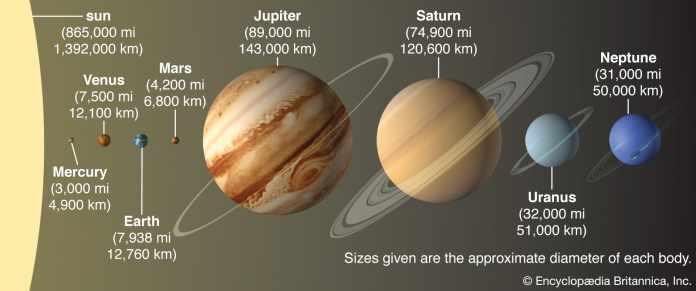Are you aware of the fact that our Universe is infinite? There are millions of infinite Solar Systems present in this vast Universe? Moreover, Universe is a tiny word used for something incredible and big. Whenever you look in the sky or the stars at night, have you ever wondered about the Universe and its miracles? Do you know? The leads that seem so small, calm and beautiful at night are not the way they seem. In reality, A star is a big ball of fire, sometimes more prominent than the Sun. There are millions of stars revolving in the Universe. They are very far away from us. The distance is the reason that they seem calm and quiet. However, in this article, we will discuss the Universe and how long it would take to get to Mars and other planets. Without any further, let’s start! Shall we?
Table of Contents
Solar System: An Introduction

To begin with, let’s find the answer to the question “What is the Solar system?”. Our solar system is an extensive arrangement consisting of a sun and an orbit. The Sun is in the centre, and the other objects, “Planets”, revolve around the Sun in orbit. Orbit is a regular or repeating path on which each planet revolves around the Sun. Apart from different worlds, other small and big celestial bodies or dwarf planets also revolve around the Sun.
However, we give recognition mainly to the eight planets, which we will discuss later. Also, we will discuss “How long would it take to get to Mars”?
Do you wish to know about how our grand Universe formed? Let me answer that for you!
Around 4.6 billion years ago, there was a big bang or gravitational collapse in the Galaxy, which led to the Solar system’s formation (Sun, moon, planets, etc.) It took thousands of years for the construction of a complete solar system. Most of the solar system’s mass is Jupiter(one of the eight planets) and the Sun.
Moreover, the planets nearest to the Sun are Mercury, Venus, Earth and Mars. These planets are terrestrial. Terrestrial Planets are planets made of rocks and metals. On the other hand, planets that are larger than Earth in size are Giant planets. The giant planets are Jupiter, Saturn, Uranus and Neptune. Jupiter and Saturn are the biggest of all the planets and consist of Hydrogen and helium gas mainly. However, Uranus and Neptune are almost billions of years far away from the Sun. Thus, they mainly consist of Ice.
What is Ecliptic?

All the eight planets revolve around the Sun in a circular motion. From an observer’s point of view, it looks like a flat disc where every world has its fixed orbit. This fixed circular path is often termed as “Ecliptic”.
More about the Universe….!
In this section, we will get to know some basic and essential information about the Universe.
As you all know, the Universe also comprises several other small and big objects apart from planets, Sun, moon and stars.
There is a pancake or Torus shaped entity lying between Mars and Jupiter’s Orbit. This torus-shaped entity looks like a belt and is termed as “Asteroid belt”. Also, inside this belt lie several irregular bodies and minor planets or Asteroids. This asteroid is the central asteroid belt. There are several other small and large asteroids present in the Universe. For example, the Trojan asteroid and the Near-Earth Asteroid.
Trojan Asteroids are those asteroids that share the orbit with another object. Trojan asteroids do not have their trajectory. Instead, they mainly revolve 60 degrees ahead of or behind the main planet, object or star.
However, Near-Earth Asteroid, as the name suggests, is another asteroid that has its orbit. The only difference is that this asteroid sometimes revolves in the proximity of Earth.
Trans-Neptunian Objects:-

Similarly, as there is an asteroid belt present between the Jupiter and Mars orbit, several dwarf planets and objects lie in Neptune’s orbit. These objects revolve around the Sun and mainly consist of Ice.
Scattered disc, Sednoid, Kuiper belt are the population of the Trans-Neptunian Objects.
Dwarf Planet:-
As per the name, Dwarf planets are the minor planets that revolve around the Sun. The most famous example of a dwarf planet is Pluto. Pluto is a big ball of Ice revolving around the Sun with no hint of light or life.
Furthermore, An asteroid and trans-Neptunian object can also come into the category of the dwarf planet. For example, Eris is a trans-Neptunian object and dwarf planet too. After Pluto, it is the second-largest dwarf planet. Another example of a dwarf planet is Ceres. Ceres is also an asteroid. It is the largest object in the central asteroid belt.
Solar system Bodies and their definitions:-
Apart from asteroid belts, trans-Neptunian objects, other big and small bodies revolve freely around the Sun. For example, interplanetary dust clouds, comets and centaurs. Lets us discuss some more essential definitions:-
Comets:-

Comets are small and big free bodies that revolve around the Sun. This body, when it gets close to the Sun, starts a process of Outgassing. In this process, the comets get heated and start releasing some gases. This is visible in the Atmosphere in the form of a tail. Solar radiation is responsible for this.
Centaurs:-
Another solar system body is exhibiting the character traits of both an asteroid and a comet. The name Centaur came from a mythological entity. Centaur is a Greek mythical creature with the upper body of a human and lower body or legs of a horse. They do not have their orbit. Instead, they share an apsis or orbit of one or more different giant planets. The lifespan of their rotation is not more than a few million years. However, the only exception is 514107 Kaʻepaokaʻawela or Bee-Zed. It is the only Centaur that has a fixed orbit.
Interplanetary Dust Clouds:-

One of the essential components of nature. It is responsible for providing adequate space between Planets in the solar system. Scientists have been trying to understand its nature, relationship(with the solar system) and origin for several years. Moreover, These dust clouds help the solar system in scattering the Sunlight with the help of thermal radiation. Also, Interplanetary dust clouds emit thermal radiation, which is responsible for maintaining a light in the sky at night.
Now, time to answer the question: how long would it take to get to mars? But before that, it is essential to know about the terrestrial planets and their distance from the Sun. So let us take them down one by one, shall we?
Terrestrial Planets: Mercury, Venus, Earth and Mars.
Billions of years ago, due to the Big band in the Galaxy, many bodies were formed. Also, due to the continuous collision, a solar system came into existence. The solar system consists of the Sun, planets(terrestrial and giants), Asteroids, commits, moons and other undiscoverable objects. All the planets, Terrestrial planets or non-terrestrial planets revolve around the Sun.
Also, the Sun is a planet itself and is revolving on its axis. Similarly, all the planets and bodies revolve around the Sun in their orbit and spinning on their axis. Now, you must be wondering, How come we are feeling nothing? Am I lying? Well, Thanks to the gravitational force, we can not feel any of this. Gravitational force is of great importance. It is responsible for providing stability to the whole Galaxy and solar system and bringing them together. It is due to gravity that every object follows its rhythm or fixed path.
Now, talking about the Sun. Sun is a big ball of fire. We are not able to feel its heat because of the distance. Earth is millions of years away from the Sun. Also, the Sunlight we get gets filtered. All the harmful rays get absorbed into the Atmosphere. Ozone, the protective shield around the Earth, saves it from entering the Earth. Thanks to the Ozone, we are alive otherwise! If not for the ozone, Sunlight would have burnt the whole planet Earth down.
What are Inner planets?
Planets that are near to the Sun are the Inner planets. Terrestrial planets and other asteroids make the inner planets. Mercury, Venus, Earth and Mars, Asteroid belts are part of the Inner planets.
Terrestrial planets are near to the Sun and are hotter than the giant planets. This is because they are near to the Sun. On the other hand, Giant planets are colder because they are billions of years away from the Sun.
Venus is the hottest planet in the solar system. Now you must be wondering why? First, though, Mercury is near to the Sun. This means, technically, Mercury should be the hottest of all. However, there is a strong reason behind this. This is because of a phenomenon called the “Greenhouse effect”.
It is a natural phenomenon in which the Sunlight gets trapped on the planet. Therefore, when sun rays reach Venus, none of it reflects. Also, another reason is the presence of carbon dioxide. Venus is smaller in size and releases lots of carbon dioxide. As a result, the surface of Venus becomes warm. On top of that, when Sunlight reaches Venus, it makes the surface 90 times hotter than Earth’s surface. Thus, Venus is hotter than any other planet on Earth.
How long would it take to get to Mars?
Since the beginning of the article, we have discussed every bit about the Universe except How long would it take to get to Mars. So let me finally answer that for you.
To increase our general knowledge, let me tell you a quick fact! Do you know? Mars is the nearest planet to Earth. It may take about seven months to get to Mars from Earth. However, due to its unsuitable Atmosphere, the living conditions are unfamiliar to humans.
Conclusion:-
In the end, I hope I was able to help you answer all the questions about the Universe and How long would it take to get to mars? Thank you and take care!






